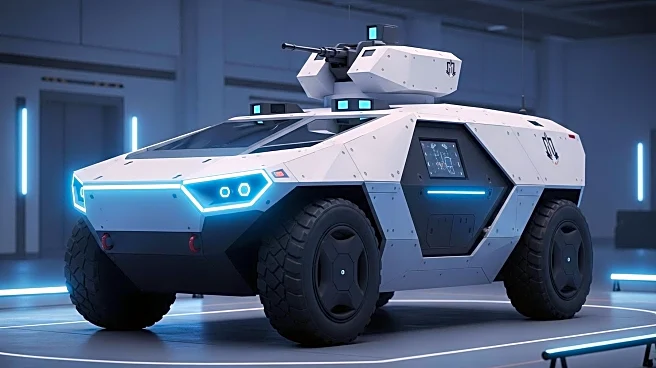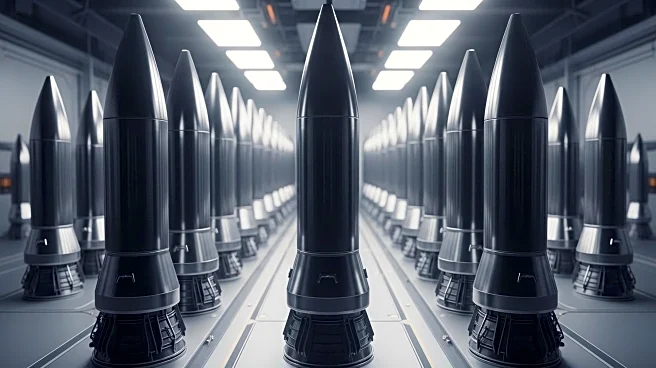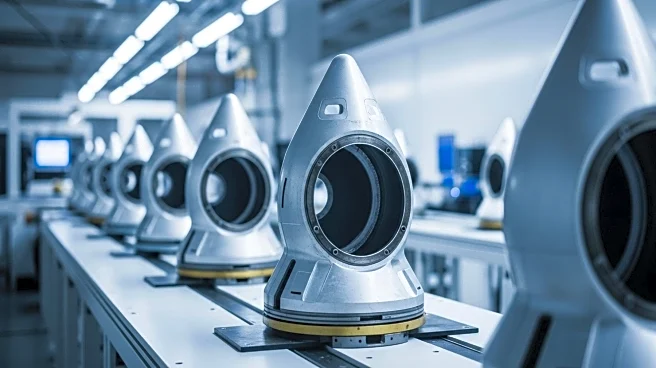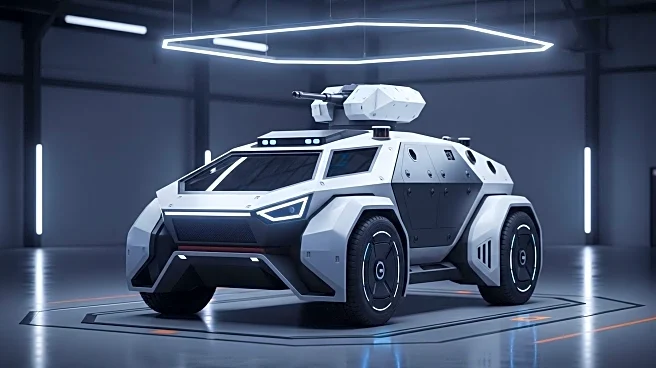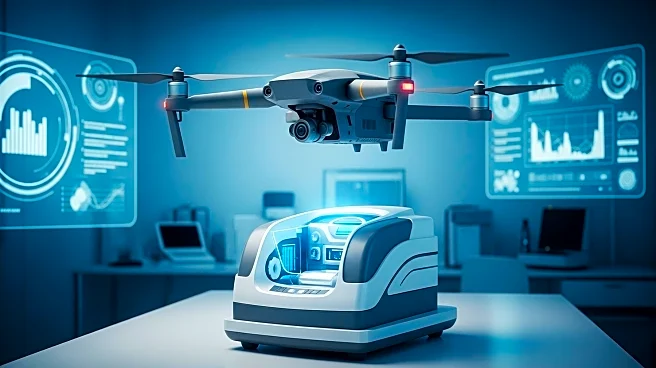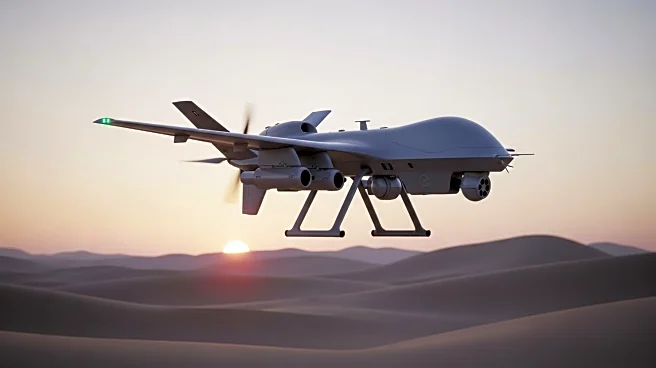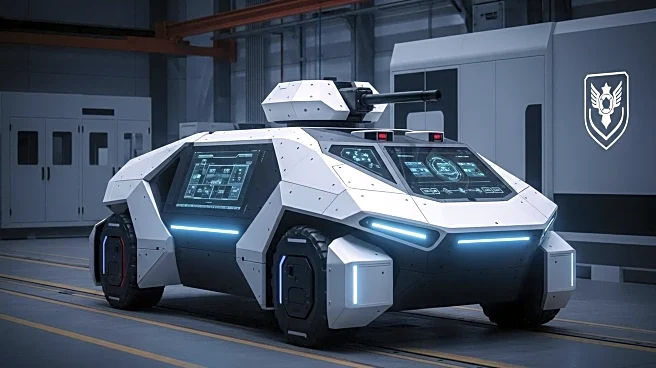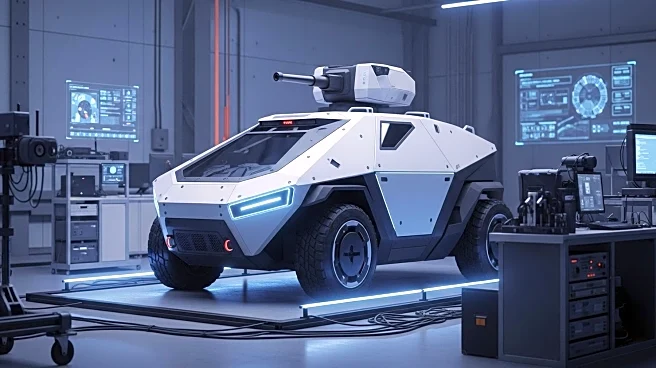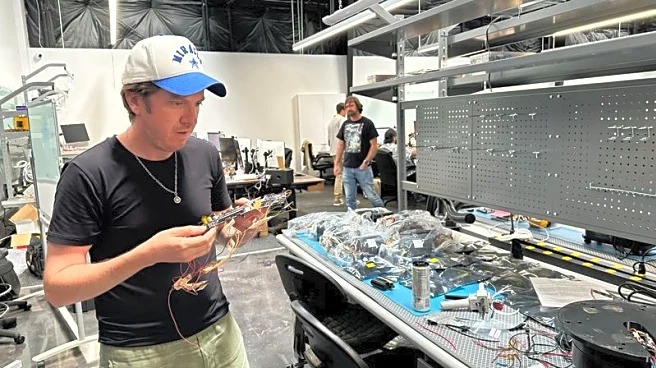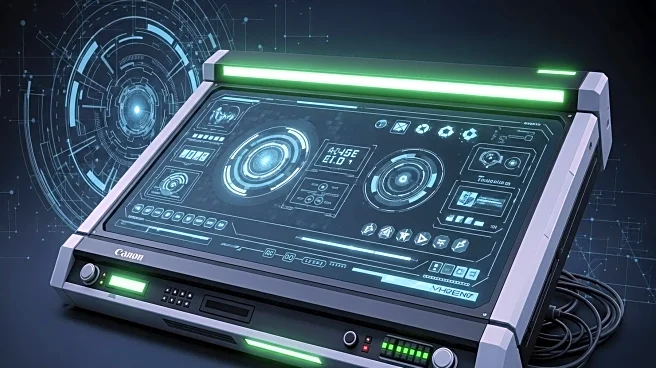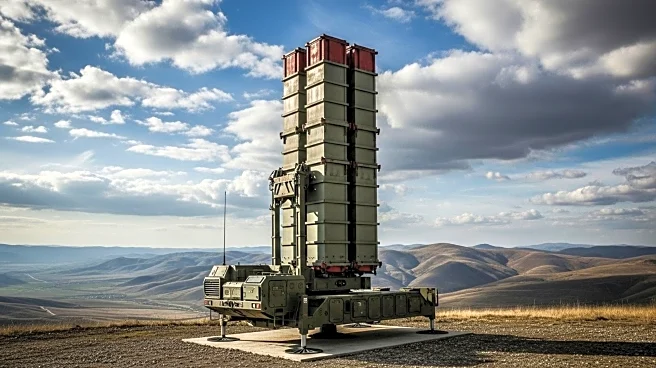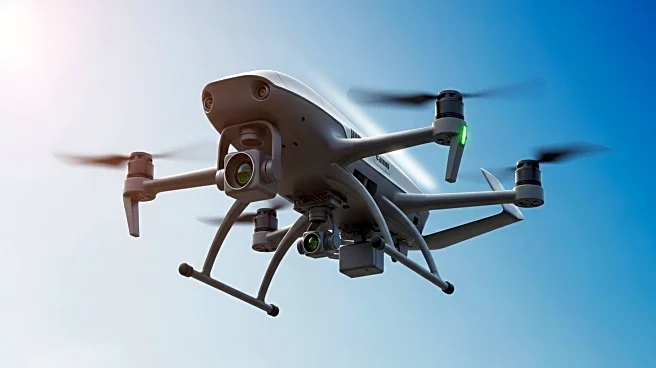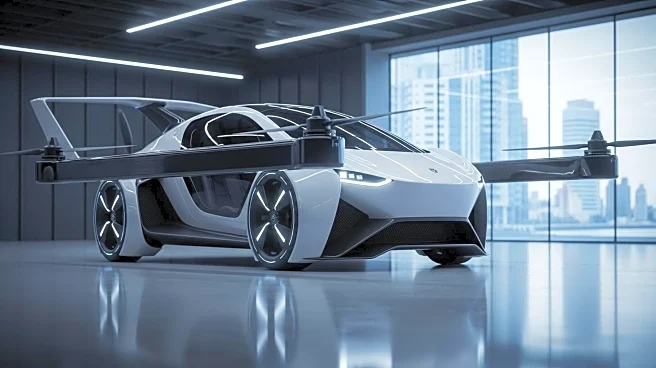What is the story about?
What's Happening?
BAE Systems has announced a partnership with Forterra to accelerate the development of an autonomous version of the U.S. Army's Armored Multi-Purpose Vehicle (AMPV). This collaboration marks the first external partnership under BAE's 'capability kit' modernization initiative. The project aims to deliver a prototype by 2026, significantly reducing the traditional development timeline. The AMPV is designed to replace the aging M113 family of vehicles and will serve alongside other BAE-manufactured vehicles in the Army's Armored Brigade Combat Teams. Forterra will provide its AutoDrive system, a modular autonomous driving platform, which is already deployed on various vehicle types. The open architecture of this software allows for interoperability across different platforms, enabling the Army to integrate additional payloads and missions beyond the AMPV.
Why It's Important?
The partnership between BAE Systems and Forterra is crucial as it addresses the growing need for modernized battlefield vehicles capable of handling complex, multi-domain threats. By integrating autonomous technology, the AMPV can be utilized in high-risk missions such as resupply, casualty evacuation, and reconnaissance without endangering human crews. This development reflects a broader trend in defense procurement, where the Pentagon is urging contractors to deliver faster and design modular systems that can be updated efficiently. The initiative not only enhances the Army's operational capabilities but also strengthens national security by providing advanced technological solutions to maintain battlefield dominance.
What's Next?
The collaboration is expected to produce a prototype of the autonomous AMPV by 2026, followed by a demonstration. The technology developed through this partnership is not limited to the AMPV; it could be adapted for other vehicles like the Bradley A4 and the M109A7 Paladin, which are integral to the Army's Armored Brigade Combat Teams. As the project progresses, further strategic agreements may be established to drive innovation in combat vehicle technology, ensuring that U.S. warfighters have access to cutting-edge solutions that outpace adversaries.
Beyond the Headlines
The integration of autonomous systems in military vehicles raises important ethical and operational questions. While these technologies enhance mission capabilities and reduce risks to human life, they also necessitate careful consideration of the implications of autonomous decision-making in combat scenarios. The development of such systems must balance technological advancement with ethical standards and operational reliability to ensure responsible use in military applications.
AI Generated Content
Do you find this article useful?
